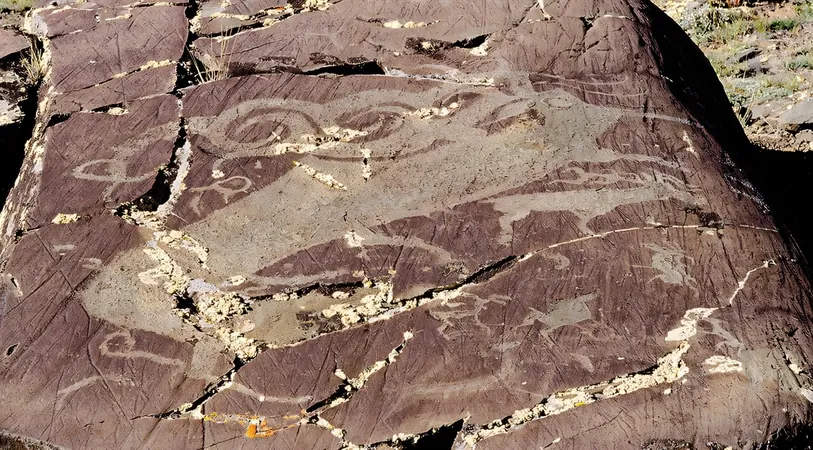
Ancient Elk Art: From Nature to Nightmares – The Unexpected Transformation of Rock Images
2025-07-13
Author: Li
Unraveling the Mystery of Elk Rock Art
A groundbreaking study by Dr. Esther Jacobson-Tepfer, featured in the Cambridge Archaeological Journal, delves into an intriguing evolution of elk rock art in Mongolia's Altai region. This research highlights how strikingly realistic depictions of elk morphed into bizarre, wolf-like figures over time.
The Majestic Elk: Nature’s Beasts
Elk, the majestic giants of the Cervidae family—second only to moose—were once celebrated in ancient artistry. Renowned for their impressive antlers, which are shed and regrown annually, these mixed feeders thrived in forested areas, relying on a diet of grasses and browse.
Tracing the Roots: Ancient Artistry
The earliest elk representations date back to the late Paleolithic period, around 12,000 years ago. While painted images are rare and fleeting in the rugged Altai Mountains, one significant set still captivates scholars: the cave art at Khoit Tsenkir in Khovd aimag.
From Realism to Abstraction: A Shocking Shift
Initially, these artistic impressions were realistic, capturing the essence of elk—both male and female—in natural poses. Over the ages, however, the representation began to shift dramatically. As time passed, the graceful elk became increasingly stylized, evolving into figures with elongated bodies and exaggerated antlers.
Environmental Changes Spark Artistic Evolution
Dr. Jacobson-Tepfer suggests that these artistic transformations were influenced by significant paleoenvironmental changes. As the Eurasian steppe cooled and dried during the late and mid-Holocene, forests receded, pushing elk further west and forcing human hunters and herders into new territories.
A Semi-Nomadic Shift: Impact on Society
This environmental shift heralded a semi-nomadic lifestyle for many, as families began to travel greater distances with their livestock. Art from this era increasingly depicted scenes of movement, a reflection of the changing dynamics of human society. Rock art began to emerge in higher locations, illustrating the adaptation to new hunting and grazing grounds.
The Elk's Symbolic Role Evolves
As societies adapted, the representation of elk transitioned from that of natural animals to complex symbols of rank and identity. By the Turkic Period, the elk's image vanished entirely, marking a significant shift in cultural values.
Conclusion: A Window into Our Past
Dr. Jacobson-Tepfer's research is more than an exploration of ancient art; it reveals how our relationship with nature can profoundly influence cultural expression and identity throughout the ages.



 Brasil (PT)
Brasil (PT)
 Canada (EN)
Canada (EN)
 Chile (ES)
Chile (ES)
 Česko (CS)
Česko (CS)
 대한민국 (KO)
대한민국 (KO)
 España (ES)
España (ES)
 France (FR)
France (FR)
 Hong Kong (EN)
Hong Kong (EN)
 Italia (IT)
Italia (IT)
 日本 (JA)
日本 (JA)
 Magyarország (HU)
Magyarország (HU)
 Norge (NO)
Norge (NO)
 Polska (PL)
Polska (PL)
 Schweiz (DE)
Schweiz (DE)
 Singapore (EN)
Singapore (EN)
 Sverige (SV)
Sverige (SV)
 Suomi (FI)
Suomi (FI)
 Türkiye (TR)
Türkiye (TR)
 الإمارات العربية المتحدة (AR)
الإمارات العربية المتحدة (AR)